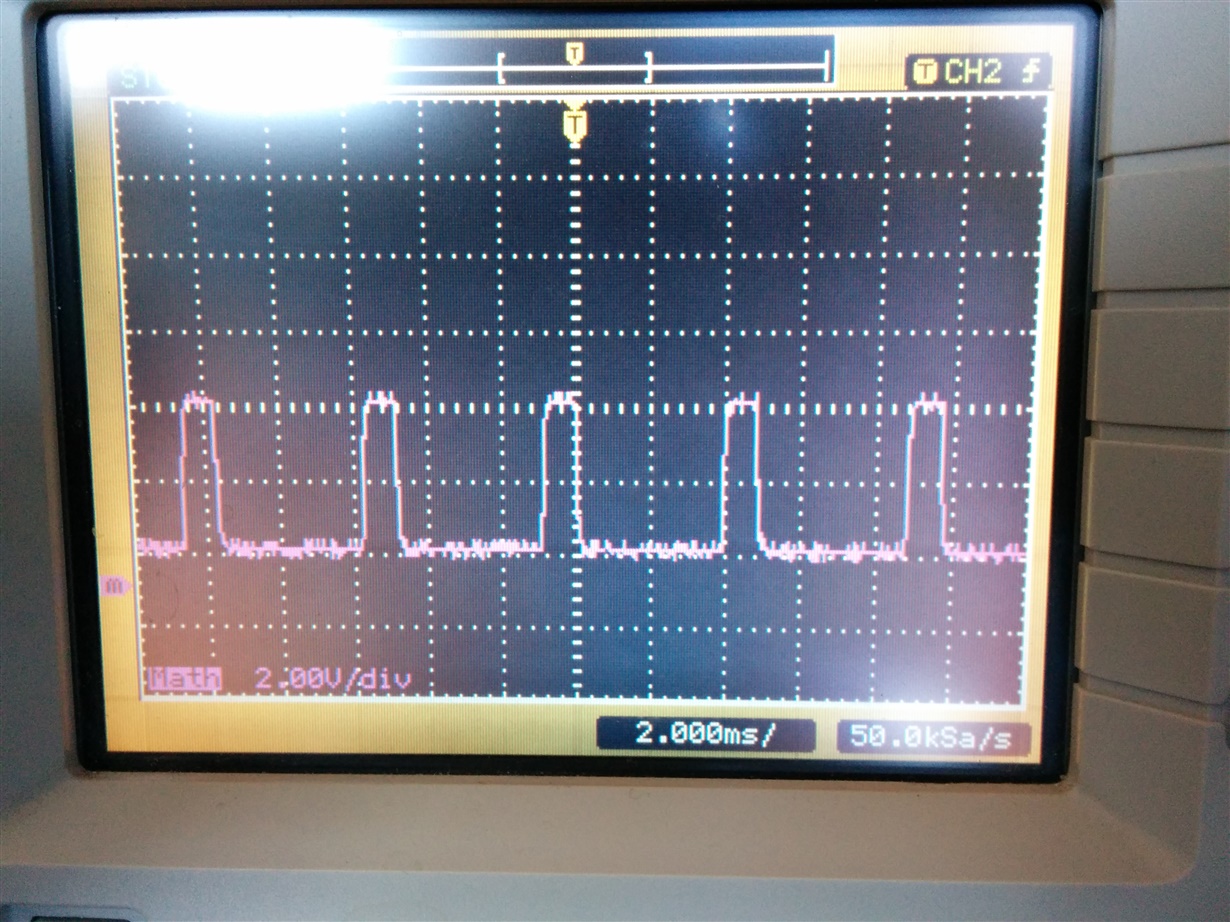I’m having trouble using an external PWM to drive an LRA using the DRV2603 Evaluation Board.
Using binary counting Mode 5 (LEDs: 00101), I press button B2 to Enable the DRV2603. The external enable signal works correctly; when I toggle it on and off, the LRA turns on and off. However, I supply an external PWM signal and no matter what the signal looks like (0% to 100%), the signal driving the LRA doesn’t change (measured by oscilloscope attached to OUT- and OUT+). I have removed the JP1 jumper. My PWM signal is 3.3v and 10kHz frequency and the board is powered with 5v from a USB connection. This seems to be OK given what I read in the datasheet [External PWM Voltage, VPWM' (optional): 1.8V to VDD]. I manually change the external PWM (from 0% to 100%), confirmed with oscilloscope reading, and the signal to the LRA doesn’t change. I also tried using a high and low signal as the external PWM to simulate 0% and 100% PWM but the LRA vibration does not change.
I’ve also tried this with an external LRA (https://catalog.precisionmicrodrives.com/order-parts/product/c10-100-10mm-linear-resonant-actuator-4mm-type) and removed the JP3 and JP4 jumpers and the result is the same.
In an attempt to troubleshoot further and disconnect the MSP430 from the DRV2603, I removed resistors R1 and R8 and shorted resistor R2 as suggested on pages 10 and 11 of the DRV2603 Evaluation Kit User’s Guide. The result is the same. I also test this using binary counting Mode 3 (LEDs: 00011) and pressing button B2 and the results are the same (external enable works presumably since I removed resister R8, external PWM doesn’t work).
Do you have any suggestions for getting the external PWM signal to drive the DRV2603? This seems like it should be straightforward but I can’t seem to get it to operate given the instructions in the User’s Guide.
Thank you!



